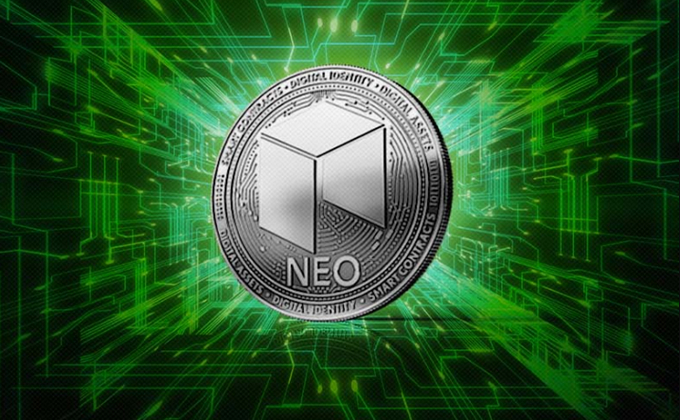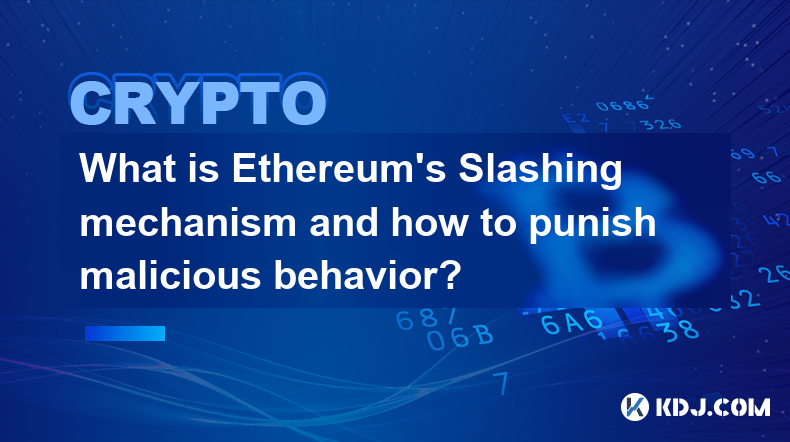-
 Bitcoin
Bitcoin $83,324.3682
-0.96% -
 Ethereum
Ethereum $1,818.1316
-2.08% -
 Tether USDt
Tether USDt $0.9999
0.00% -
 XRP
XRP $2.0459
-1.77% -
 BNB
BNB $602.9670
0.61% -
 Solana
Solana $118.6811
-4.36% -
 USDC
USDC $1.0000
-0.01% -
 Dogecoin
Dogecoin $0.1647
-2.29% -
 Cardano
Cardano $0.6489
-2.70% -
 TRON
TRON $0.2354
-0.80% -
 Toncoin
Toncoin $3.7675
-5.81% -
 UNUS SED LEO
UNUS SED LEO $9.4264
0.19% -
 Chainlink
Chainlink $12.9734
-3.40% -
 Stellar
Stellar $0.2619
-1.17% -
 Avalanche
Avalanche $18.3750
-2.81% -
 Sui
Sui $2.3033
-0.83% -
 Shiba Inu
Shiba Inu $0.0...01223
0.28% -
 Hedera
Hedera $0.1629
-0.49% -
 Litecoin
Litecoin $83.8176
2.52% -
 Polkadot
Polkadot $4.0062
-0.84% -
 MANTRA
MANTRA $6.3682
2.59% -
 Bitcoin Cash
Bitcoin Cash $304.3215
-0.10% -
 Bitget Token
Bitget Token $4.5315
-0.92% -
 Dai
Dai $1.0001
0.00% -
 Ethena USDe
Ethena USDe $0.9998
0.00% -
 Pi
Pi $0.6280
-8.11% -
 Hyperliquid
Hyperliquid $11.9038
-8.61% -
 Monero
Monero $214.1930
-0.70% -
 Uniswap
Uniswap $5.9929
-0.74% -
 Aptos
Aptos $5.2227
-0.74%
Is NEO coin worth buying
NEO's dual-token system, with its native NEO token for governance and GAS token for utility, provides a unique proposition in the smart contract platform landscape.
Nov 11, 2024 at 12:36 am

Is NEO Coin Worth Buying?
NEO, formerly known as Antshares, is a blockchain platform developed by the NEO Foundation. It aims to provide a comprehensive infrastructure for smart contracts and decentralized applications (dApps). The platform features a unique two-token system, with NEO as the native cryptocurrency and GAS as the utility token used for transaction fees and network governance.
Whether or not NEO is worth buying depends on various factors, including your investment goals, risk tolerance, and market conditions. Let's delve into a detailed analysis of these factors to help you make an informed decision.
1. Understanding NEO's Value Proposition
NEO offers several key features that set it apart from other blockchain platforms:
- Smart Contract Functionality: NEO supports the development and deployment of smart contracts using its own programming language, NeoScript. This allows developers to create sophisticated applications that can automate tasks and execute agreements without the need for intermediaries.
- Decentralized Governance: NEO employs a Delegated Byzantine Fault Tolerance (dBFT) consensus mechanism, which enables a group of elected delegates to validate transactions and maintain network security. This decentralized approach provides greater stability and governance than proof-of-work or proof-of-stake systems.
- Digital Identity: NEO has integrated a digital identity framework that allows users to create and manage their digital identities. This feature provides a secure and portable way to interact with dApps and services across different platforms and devices.
- Interoperability: NEO is designed to be interoperable with other blockchains, such as Ethereum and NEO's Ontology counterpart. This allows developers to leverage the best features of multiple platforms and build applications that can seamlessly interact with each other.
2. Assessing NEO's Tokenomics
- NEO's Scarcity: NEO has a limited total supply of 100 million tokens. This controlled scarcity contributes to its value proposition by preventing excessive dilution and ensuring long-term stability.
- GAS Production and Utility: GAS tokens are generated by NEO holders through a process called "GAS claim." These tokens are used as fuel for transactions and play a vital role in network governance. The demand and value of GAS are influenced by the number of transactions processed on the NEO blockchain.
- Dual Token Model: The dual token model of NEO and GAS provides a clear distinction between the governance and utility functions. NEO holders have the right to vote on network proposals and earn GAS rewards, while GAS is used as the primary currency for executing transactions and running smart contracts.
3. Examining NEO's Market Performance
NEO's market performance has been influenced by several factors, including overall market trends, crypto market sentiment, and platform developments.
- Historical Price Fluctuations: NEO's price has experienced significant fluctuations over the years, reaching a peak of over $100 in 2018 and plummeting to lows below $10 during market downturns. These price swings are common in the highly volatile cryptocurrency market and should be considered when evaluating its investment potential.
- Market Sentiment: NEO's price is influenced by overall market sentiment towards cryptocurrencies. Positive sentiment, such as during bull markets, tends to drive prices higher, while negative sentiment during bear markets can lead to price declines.
- Platform Developments: NEO's price can also be affected by significant platform developments and announcements. Major upgrades, partnerships, and dApp integrations can generate positive sentiment and boost the value of NEO.
4. Analyzing NEO's Competition
NEO faces competition from several other established blockchain platforms, including:
- Ethereum (ETH): A well-established platform known for its smart contract functionality and large ecosystem of dApps and development tools.
- EOS (EOS): A high-performance platform designed for scalability and ease of dApp development.
- Cardano (ADA): A research-driven platform focused on providing secure and scalable blockchain solutions.
- Polkadot (DOT): A platform enabling interoperability and communication between different blockchains.
5. Evaluating NEO's Investment Potential
When considering NEO as an investment, it's crucial to evaluate its potential risks and rewards.
- Potential Risks: As with all cryptocurrencies, NEO is subject to market volatility and regulatory uncertainty. Its value can fluctuate significantly, and there's no guarantee of a positive return on investment.
- Potential Rewards: If NEO's platform gains traction and the ecosystem grows, the value of its token could increase. NEO's governance features and interoperability potential can provide long-term value to holders who actively participate in the network.
6. Making a Decision
The decision of whether or not to buy NEO ultimately depends on your individual circumstances and investment strategy. Consider the following steps to make an informed choice:
- Research: Thoroughly research NEO's technology, use cases, tokenomics, and market performance. Understand its strengths, weaknesses, and potential risks.
- Set Financial Goals: Define your investment goals and risk tolerance. Determine how much you can afford to invest and how long you plan to hold the asset.
- Diversify: Diversifying your portfolio across multiple cryptocurrencies and asset classes can reduce risk and enhance returns. Consider allocating only a portion of your portfolio to NEO.
- Long-Term Perspective: Recognize that cryptocurrency investments can take time to mature. If you believe in NEO's long-term potential, be prepared to hold it through market volatility.
- Monitor Regularly: Regularly monitor NEO's price and market developments. Adjust your investment strategy as needed to mitigate risks and maximize returns.
Remember that cryptocurrency investments carry inherent risks. Do not invest more than you can afford to lose, and consult with financial professionals if necessary.
Disclaimer:info@kdj.com
The information provided is not trading advice. kdj.com does not assume any responsibility for any investments made based on the information provided in this article. Cryptocurrencies are highly volatile and it is highly recommended that you invest with caution after thorough research!
If you believe that the content used on this website infringes your copyright, please contact us immediately (info@kdj.com) and we will delete it promptly.
- FDUSD, BTC, TUSD, SEI, and LINK are the top 5 virtual asset-related keywords attracting the most interest
- 2025-04-03 15:45:12
- Bitcoin Pepe (BPEP) could hit $250 in four years
- 2025-04-03 15:45:12
- TAO Breaks Resistance, HYPE Dips 14%— Yet BlockDAG PullS in $210M Following Keynote 3 Launch!
- 2025-04-03 15:40:13
- Dogecoin (DOGE) Price Prediction: An Analyst Highlights a Bullish Divergence, Suggesting a Rally Could Be in the Cards
- 2025-04-03 15:40:13
- XRP Navigates Volatile Waters, Targeting a Breakout From Its Range
- 2025-04-03 15:35:27
- Meme Cryptocurrency Dogecoin DOGE/USD Falls After President Donald Trump's Tariff Shock, Extending Weekly Losses to Over 16%
- 2025-04-03 15:35:27
Related knowledge

What is Ethereum’s Slashing mechanism and how to punish malicious behavior?
Feb 20,2025 at 03:08am
Key PointsOverview of slashingDifferent types of slashing in EthereumIncentives and consequences of slashingIdentifying and reporting slashed validatorsOngoing discussions and potential improvementsEthereum's Slashing Mechanism: Punishing Malicious BehaviorEthereum's slashing mechanism is an essential tool for ensuring network security and punishing mal...

What is the verifier node of Ethereum and how to become a verifier?
Feb 19,2025 at 06:00pm
The Verifier Node of Ethereum: A Comprehensive GuideKey Points:What is a Verifier Node?How to Become a Verifier NodeResponsibilities and Rewards of a Verifier NodeMinimum Requirements for Becoming a Verifier NodePotential Difficulties in Running a Verifier Node1. What is a Verifier Node?A Verifier Node is an independent entity on the Ethereum network th...

What is Ethereum’s staking, and how to participate and earn money?
Feb 19,2025 at 04:37pm
Key Points:Understanding Ethereum's Staking MechanismSteps to Participate in StakingBenefits and Rewards of StakingSecurity and Risk ConsiderationsTechnical Requirements and Hardware OptionsPotential Challenges and Troubleshooting TipsFAQs on Ethereum StakingWhat is Ethereum's Staking?Proof-of-Stake (PoS) is a consensus mechanism used in blockchain netw...

What is Ethereum’s DAO (Decentralized Autonomous Organization) and how does it work?
Feb 20,2025 at 03:12am
Key PointsDefinition and Structure of a DAOGovernance and Decision-Making in DAOsBenefits and Use Cases of DAOsChallenges and Limitations of DAOsWhat is Ethereum's DAO (Decentralized Autonomous Organization) and How Does It Work?Definition and Structure of a DAOA Decentralized Autonomous Organization (DAO) is an innovative governance and management fram...

What is Ethereum's multi-signature wallet and how to improve security?
Feb 20,2025 at 02:18pm
Key Points:Understanding the Concept of a Multi-Signature WalletBenefits and Drawbacks of Multisig WalletsRequirements for Setting Up a Multisig WalletStep-by-Step Guide to Generating a Multisig WalletImplementing Strategies for Enhanced Security1. Understanding the Concept of a Multi-Signature WalletA multi-signature (multisig) wallet in the Ethereum e...

What is Ethereum's oracle and how to provide data for smart contracts?
Feb 21,2025 at 01:30am
Key Points:Understanding the concept of oracles in EthereumExploring different types of oraclesDetailed guide on how to provide data for smart contractsAddressing potential challenges and considerationsWhat is Ethereum's Oracle?Oracles are crucial components in the Ethereum ecosystem, enabling smart contracts to access real-world data and off-chain even...

What is Ethereum’s Slashing mechanism and how to punish malicious behavior?
Feb 20,2025 at 03:08am
Key PointsOverview of slashingDifferent types of slashing in EthereumIncentives and consequences of slashingIdentifying and reporting slashed validatorsOngoing discussions and potential improvementsEthereum's Slashing Mechanism: Punishing Malicious BehaviorEthereum's slashing mechanism is an essential tool for ensuring network security and punishing mal...

What is the verifier node of Ethereum and how to become a verifier?
Feb 19,2025 at 06:00pm
The Verifier Node of Ethereum: A Comprehensive GuideKey Points:What is a Verifier Node?How to Become a Verifier NodeResponsibilities and Rewards of a Verifier NodeMinimum Requirements for Becoming a Verifier NodePotential Difficulties in Running a Verifier Node1. What is a Verifier Node?A Verifier Node is an independent entity on the Ethereum network th...

What is Ethereum’s staking, and how to participate and earn money?
Feb 19,2025 at 04:37pm
Key Points:Understanding Ethereum's Staking MechanismSteps to Participate in StakingBenefits and Rewards of StakingSecurity and Risk ConsiderationsTechnical Requirements and Hardware OptionsPotential Challenges and Troubleshooting TipsFAQs on Ethereum StakingWhat is Ethereum's Staking?Proof-of-Stake (PoS) is a consensus mechanism used in blockchain netw...

What is Ethereum’s DAO (Decentralized Autonomous Organization) and how does it work?
Feb 20,2025 at 03:12am
Key PointsDefinition and Structure of a DAOGovernance and Decision-Making in DAOsBenefits and Use Cases of DAOsChallenges and Limitations of DAOsWhat is Ethereum's DAO (Decentralized Autonomous Organization) and How Does It Work?Definition and Structure of a DAOA Decentralized Autonomous Organization (DAO) is an innovative governance and management fram...

What is Ethereum's multi-signature wallet and how to improve security?
Feb 20,2025 at 02:18pm
Key Points:Understanding the Concept of a Multi-Signature WalletBenefits and Drawbacks of Multisig WalletsRequirements for Setting Up a Multisig WalletStep-by-Step Guide to Generating a Multisig WalletImplementing Strategies for Enhanced Security1. Understanding the Concept of a Multi-Signature WalletA multi-signature (multisig) wallet in the Ethereum e...

What is Ethereum's oracle and how to provide data for smart contracts?
Feb 21,2025 at 01:30am
Key Points:Understanding the concept of oracles in EthereumExploring different types of oraclesDetailed guide on how to provide data for smart contractsAddressing potential challenges and considerationsWhat is Ethereum's Oracle?Oracles are crucial components in the Ethereum ecosystem, enabling smart contracts to access real-world data and off-chain even...
See all articles























































































